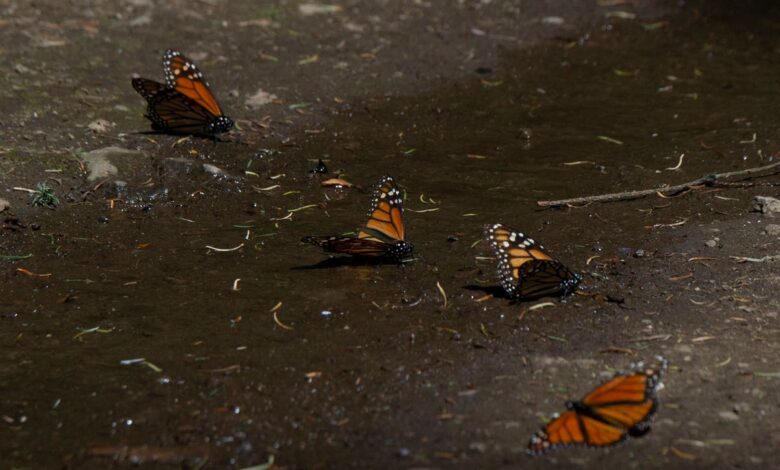Monarch butterflies increasingly plagued by debilitating parasite, scientists say

Monarch butterflies, which are among the most iconic insects in North America, are increasingly plagued by a debilitating parasite, according to a new study.
The research, published recently in the Journal of Animal Ecology, found they are being increasingly affected by the protozoan parasite Ophryocystis elektrosirrha, or OE.
Scientists, including those from the Emory University in the US, analysed 50 years of data on the butterflies and found that the OE infection rate has increased from less than 1 per cent of the eastern monarch population in 1968 to as much as 10 per cent today.
“We’re seeing a significant change in a wildlife population with a parasitism rate steadily rising from almost nonexistent to as high as 10%,” Ania Majewska, first author of the paper, said in a statement.
“It’s a signal that something is not right in the environment and that we need to pay attention,” Dr Majewska said.
This rise in parasitism may endanger the iconic mass migration of the monarchs, involving hundreds of millions of butterflies, scientists warn.
The parasite invades the gut of monarch caterpillars, and if the adult butterfly leaves the pupal stage with a severe parasitic infection, it may start oozing fluids from its body and die.
Even if such butterflies survive in case of a milder infection, scientists say the monarchs do not fly well or live as long as uninfected ones.
“This research offers an important clue to the mystery of why one of the most iconic North American animal migrations has been threatened,” Betsy von Holle, a program director at the National Science Foundation’s Division of Environmental Biology, said.
Every autumn, the western monarch population flies hundreds of miles down the Pacific Coast to spend the winter in California, while eastern monarchs on the other side of the Rocky Mountains fly from as far north as the US-Canadian border to overwinter in Central Mexico.
The butterflies cover as much as 5,000 km during their epic migration journey.
“Our findings suggest that tens of millions of eastern monarch butterflies are getting sick and dying each year from these parasites,” said study senior author Jaap de Roode.
If the infection rates keep going up, scientists caution that fewer and fewer monarchs may survive to migrate to their overwintering sites.
Researchers suspect that the rise in the parasitism rate is partly caused by an increased density of monarchs in places where they lay their eggs.
They say the increased density is likely due to many factors such as the loss of wildlife habitat, the widespread planting of exotic, nonnative species of milkweed, and by people raising monarchs in large numbers in confined spaces.
“Increases in infection among eastern North American monarchs post-2002 suggest that changes to the host’s ecology or environment have intensified parasite transmission,” scientists wrote in the study.
Researchers have called for further studies to examine the degree to which human practices like mass caterpillar rearing and the widespread planting of exotic milkweed have contributed to this trend.





